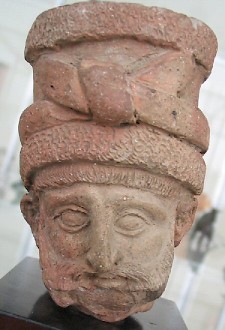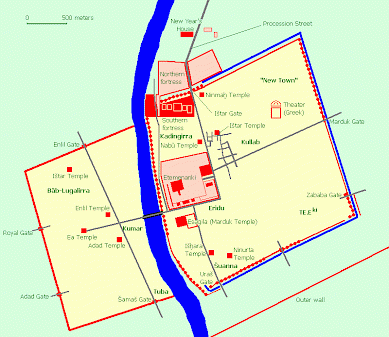Zopyrus
Zopyrus: a Persian nobleman who may have played a role during the capture of Babylon by the Persian king Darius I the Great in December 522 BCE. The story is told by the Greek researcher Herodotus and can be read here.

In March 522 BCE, a Magian named Gaumâta seized power in the Achaemenid empire, claiming to be Smerdis, the brother of the legitimate king Cambyses. (Gaumâta could do this, because the real Smerdis had been killed secretly.) Cambyses advanced against the usurper, but died in Syria, and the false Smerdis was able to rule for several months. However, Cambyses' relative Darius and six others killed the usurper (29 September 522) and became king.
Immediately, he had to face a serious crisis. Nearly all provinces of the Achaemenid empire revolted. One of the rebellious countries was Babylon, where Nidintu-Bêl proclaimed himself king and took the throne name Nebuchadnezzar III, after the famous ruler of Babylonia. His first regnal year is mentioned in a cuneiform letter from 3 October. The Behistun inscription makes it clear that Darius immediately advanced against the rebel. The Babylonians were twice defeated, Nidintu-Bêl was killed and Darius took Babylon.
According to the Greek researcher Herodotus, who wrote some eighty years later, Darius experienced great difficulties when he tried to take the city.note The king was desperate. At that moment, Zopyrus, the son of Megabyzus, who had been with Darius when he killed the Magian, cut off his own ears and nose, and defected to the besieged city, saying that he had been punished by Darius. He offered his services to the Babylonians, who believed that they could rely on him. They entrusted an army to him, and he gained some successes against the troops that Darius had sent. What the Babylonians didn't know, was that these Persian troops had been instructed to flee once they had seen Zopyrus. When the young nobleman had gained all trust of he Babylonians, he suddenly opened the gates of Babylon and let the Persians in.
It is possible that Zopyrus played a role during the war against Babylon, but this story must be unhistorical (although comparison with section 32 of the Behistun inscription makes it clear that this type of mutilation was certainly not uncommon). Herodotus' account is probably inspired by the description in the Little Iliad of Odysseus, who was able to spy in Troy after mutilating himself (cf. Scholion on the Odyssey, 4.247). It is not the only story that Herodotus has adopted (or adapted) from the admired poet.
According to Herodotus, Zopyrus became governor of Babylonia. The usual reading of this remark is that he was appointed satrap, but we know for certain that this never happened. Many cuneiform texts have been found in Babylon and Zopyrus is conspicuously absent (the satrap's name was Uštânu). This cannot be coincidental, because there are too many tablets. Maybe he was appointed in another important office.

According to the History of the Persians by the Greek historian Ctesias, Zopyrus was killed when the Babylonians revolted from king Xerxes. This happened in 484/483.
Zopyrus was married to a sister of Darius; the couple had at least one daughter and a son named Megabyzus, one of the Persian commanders during Xerxes' campaign against Greece (in 480). Megabyzus was married to a daughter of Xerxes; their son was also called Zopyrus, and this man defected to the Athenians in 445. He has been regarded as one of the sources of Herodotus. If this is correct, the younger Zopyrus was remarkably unaware of the true story of the war between Darius and Nidintu-Bêl.